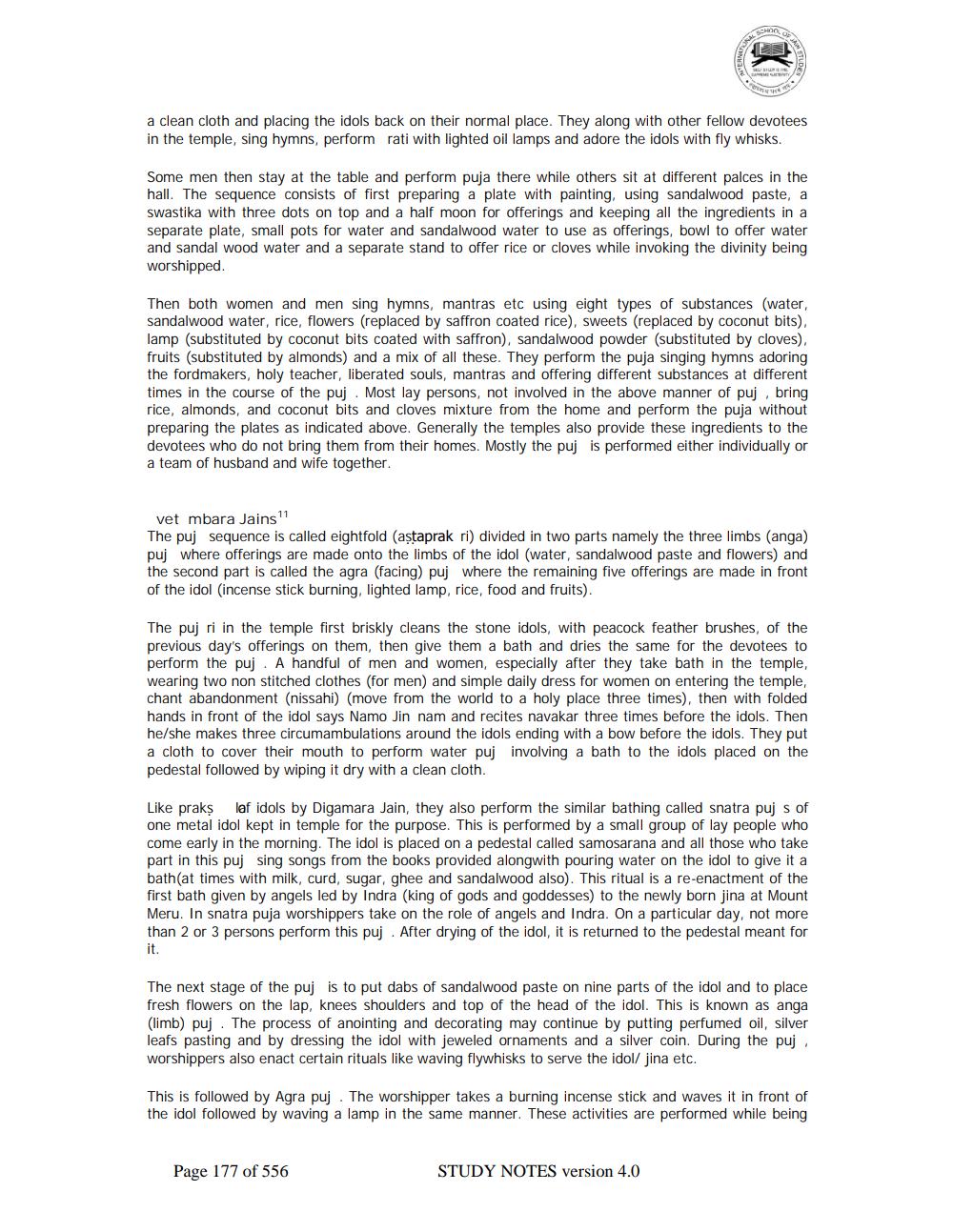________________
a clean cloth and placing the idols back on their normal place. They along with other fellow devotees in the temple, sing hymns, perform rati with lighted oil lamps and adore the idols with fly whisks.
Some men then stay at the table and perform puja there while others sit at different palces in the hall. The sequence consists of first preparing a plate with painting, using sandalwood paste, a swastika with three dots on top and a half moon for offerings and keeping all the ingredients in a separate plate, small pots for water and sandalwood water to use as offerings, bowl to offer water and sandal wood water and a separate stand to offer rice or cloves while invoking the divinity being worshipped
Then both women and men sing hymns, mantras etc using eight types of substances (water, sandalwood water, rice, flowers (replaced by saffron coated rice), sweets (replaced by coconut bits). lamp (substituted by coconut bits coated with saffron), sandalwood powder (substituted by cloves), fruits (substituted by almonds) and a mix of all these. They perform the puja singing hymns adoring the fordmakers, holy teacher, liberated souls, mantras and offering different substances at different times in the course of the puj. Most lay persons, not involved in the above manner of puj, bring rice, almonds, and coconut bits and cloves mixture from the home and perform the puja without preparing the plates as indicated above. Generally the temples also provide these ingredients to the devotees who do not bring them from their homes. Mostly the puj is performed either individually or a team of husband and wife together.
vet mbara Jains" The puj sequence is called eightfold (astaprak ri) divided in two parts namely the three limbs (anga) puj where offerings are made onto the limbs of the idol (water, sandalwood paste and flowers) and the second part is called the agra (facing) puj where the remaining five offerings are made in front of the idol (incense stick burning, lighted lamp, rice, food and fruits).
The puj ri in the temple first briskly cleans the stone idols, with peacock feather brushes, of the previous day's offerings on them, then give them a bath and dries the same for the devotees to perform the puj A handful of men and women, especially after they take bath in the temple, wearing two non stitched clothes for men) and simple daily dress for women on entering the temple, chant abandonment (nissahi) (move from the world to a holy place three times), then with folded hands in front of the idol says Namo Jin nam and recites navakar three times before the idols. Then he/she makes three circumambulations around the idols ending with a bow before the idols. They put a cloth to cover their mouth to perform water puj involving a bath to the idols placed on the pedestal followed by wiping it dry with a clean cloth.
Like prakslaf idols by Digamara Jain, they also perform the similar bathing called snatra puj s of one metal idol kept in temple for the purpose. This is performed by a small group of lay people who come early in the morning. The idol is placed on a pedestal called samosarana and all those who take part in this puj sing songs from the books provided alongwith pouring water on the idol to give it a bath(at times with milk, curd, sugar, ghee and sandalwood also). This ritual is a re-enactment of the first bath given by angels led by Indra (king of gods and goddesses) to the newly born jina at Mount Meru. In snatra puja worshippers take on the role of angels and Indra. On a particular day, not more than 2 or 3 persons perform this puj. After drying of the idol, it is returned to the pedestal meant for
The next stage of the puj is to put dabs of sandalwood paste on nine parts of the idol and to place fresh flowers on the lap, knees shoulders and top of the head of the idol. This is known as anga (limb) puj The process of anointing and decorating may continue by putting perfumed oil, silver leafs pasting and by dressing the idol with jeweled ornaments and a silver coin. During the puj worshippers also enact certain rituals like waving flywhisks to serve the idol/ jina etc.
This is followed by Agra puj. The worshipper takes a burning incense stick and waves it in front of the idol followed by waving a lamp in the same manner. These activities are performed while being
Page 177 of 556
STUDY NOTES version 4.0




